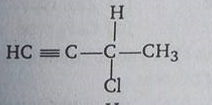Which of these types of cells is most likely to divide?
Epidermis
Parenchyma
Meristem
Xylem
The correct Answer is:C
To determine which type of cells is most likely to divide, we can analyze the options provided:
1. Epidermis: This is the outer layer of cells in plants. Its primary function is to provide protection and strength to the plant. While epidermal cells can divide, they do not do so as frequently as other types of cells.
2. Parenchyma: This is a type of simple tissue in plants composed of cells that are primarily involved in photosynthesis and storage. Parenchyma cells can divide, but they are generally more specialized and do not divide as frequently as other cell types.
3. Meristem: Meristematic cells are undifferentiated cells that are capable of continuous division. They are found in areas of the plant where growth occurs, such as the tips of roots and shoots. Their primary role is to facilitate the growth of the plant, and they are characterized by their small size, thin walls, and dense protoplast. Because they are undifferentiated, they are the most likely to divide.
4. Xylem: This is a complex tissue made up of multiple cell types, primarily responsible for the conduction of water and minerals. While xylem cells can be involved in growth, they are not primarily known for division.
Based on this analysis, the type of cells most likely to divide is:
Answer: Meristem (Option C)
Topper's Solved these Questions
- TISSUES BOOK - MTG IIT JEE FOUNDATIONCHAPTER - TISSUES EXERCISE - EXERCISE (Multiple Choice Questions (LEVEL - 2))
20 Videos
- TISSUES BOOK - MTG IIT JEE FOUNDATIONCHAPTER - TISSUES EXERCISE - EXERCISE (Assertion & Reason Type )
10 Videos
- TISSUES BOOK - MTG IIT JEE FOUNDATIONCHAPTER - TISSUES EXERCISE - NCERT SECTION
20 Videos
- NATURAL RESOURCESBOOK - MTG IIT JEE FOUNDATIONCHAPTER - NATURAL RESOURCESEXERCISE - Olympiad/HOTS Corner
11 Videos
- WHY DO WE FALL ILL?BOOK - MTG IIT JEE FOUNDATIONCHAPTER - WHY DO WE FALL ILL?EXERCISE - OLYMPIAD/HOTS CORNER
10 Videos
Similar Questions
Knowledge Check
Which type of place is most likely to have members of kingdom- Fungi ?
ACold and wetBHot and dryCWarm and humidDCold and humidWhich of the following statements is most likely to be incorrect ?
ATi(NO3_4 is a colourless compoundB[Cu(NCCH3)4]+BF−4 is a colourles compound.C[Cr(NH3)6]3+3Cl− is a coloured compoundDK3[VF6] is a colourless compoundWhich of the following is most likely to show optical isomerism ?
A B
B C
C D
D
Which of the following is most likely to show optical isomerism ?
View SolutionWhich of the following structures is most likely for XeOF4 ?
View SolutionWhich of the following is most likely to show optical isomerism?
View SolutionWhich of the following is most likely to show optical isomerism
View SolutionA mountain range is formed by the thrusting, collision and buckling of rocks near plate boundaries. Which type of mountain is it most likely to be? And which mountain range is an example of that?
View Solution
